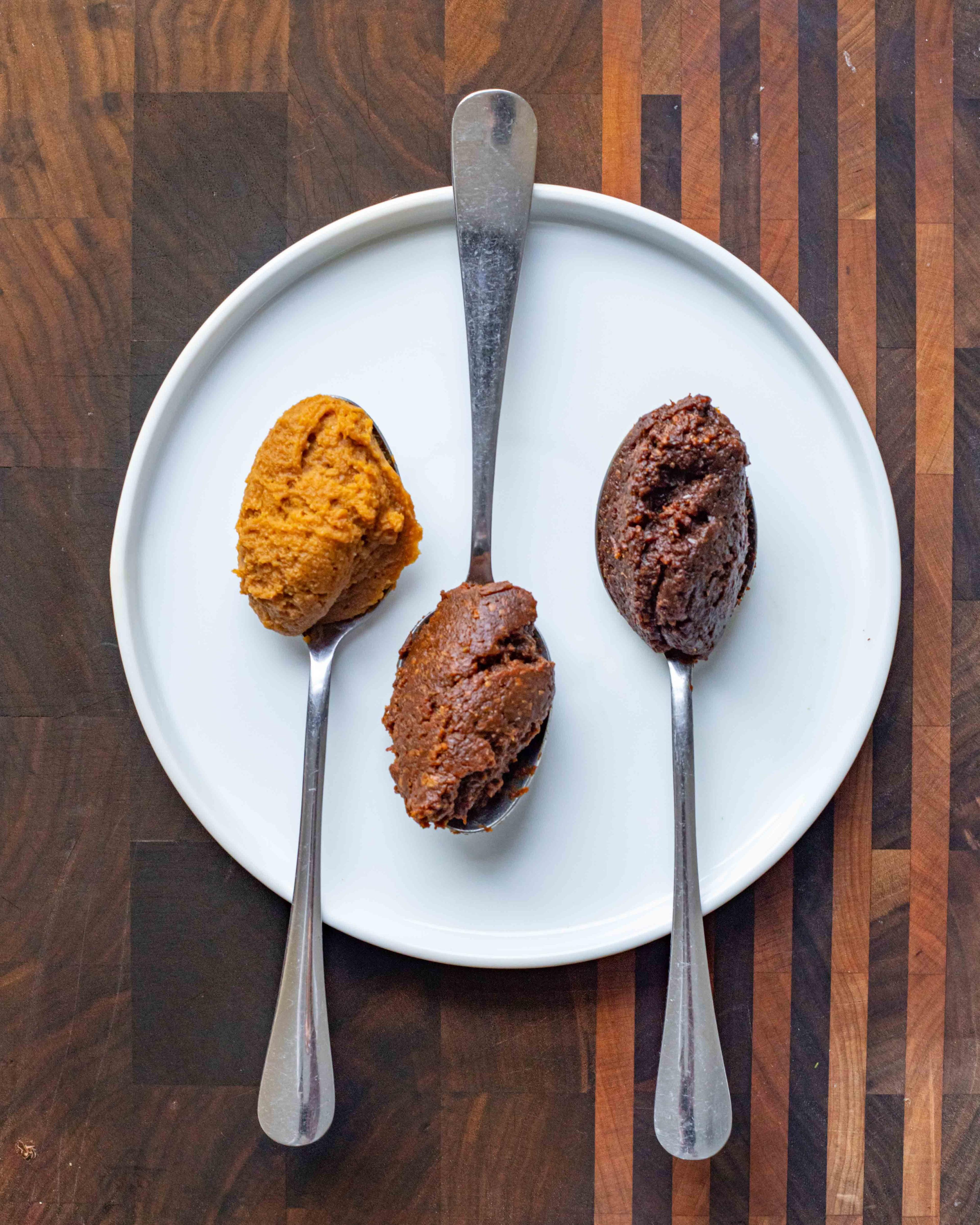If, like us, you’re fascinated by the ever-expanding cosmos of condiments, seasonings and flavourings (see here for a pick of our favourite condiments at the mo), then there’s a high chance you’ve heard of a little Japanese gem known as miso. Yes, we’re talking about the very ingredient we used to make this delightful Spicy Miso Carrot Soup, and Miso, Rosemary & Maple Glazed Ham. Not forgetting this Miso Caramel Chocolate Mousse, too. But first, what is miso and why should we bother using it?
What Is Miso?
So... What Is Miso?
Miso is a savoury paste made from fermented soybeans, and it’s a staple ingredient used in Japanese cooking. Originating from Ancient China, it first graced Japan in the 7th Century, and has recently become a seasoning that us lot here at Mob have grown a great liking for. Taking pretty much any basic, run-of-the-mill dish from 0 to 100 in as little as just a few teaspoons, it's fair to say this little paste has a lot of flavour.
The main ingredients that make up miso include soybeans, a grain (like rice or barley), a fungus known as koji, and plenty of salt. Depending on the variety, it can be smooth or chunky in texture.
Miso can be found in most, if not all, Asian supermarkets (the G.O.A.T of supermarkets, if you ask us), as well as many general supermarkets. Typically, it can be picked up in little jars, tubs or plastic packets, and tends to have a shelf life of up to a year. And like most seasonings, it’s as simple as scooping out your desired amount and bunging it into whatever you’re mustering up.
What Does Miso Taste Like?
When it comes to the flavour profile of miso, expect layers. We’re talking hits of saltiness, combined with umami notes and maybe a kick of sweetness in there, too (depending on the type of miso you’ve gone for). Eating this stuff on its own is a no-go from us, we’re afraid. Unless, of course, you’re into snacking on a funky-tasting, salty paste for breakfast. That being said, though, it's actually believed that back in the day the first few instances of miso saw it spread on food, or eaten directly.
Is Miso Good For You?
Miso isn’t exactly *good* for you, per se. But it’s not really bad for you, either. Much like gochujang, it’s celebrated for its range of health benefits. Bursting with probiotics, which contribute to a healthy gut, it's also loaded with vitamins. Not stopping there, its fermented properties also make it tons easier for our bodies to absorb the nutrients.
But it's worth mentioning that there's quite a high ratio of salt. So, we probably wouldn't go recommending that you have a spoonful of miso a day, or anything like that...
What Can I Use Instead Of Miso?
If you're feeling ravenous, and craving something like our Miso Pea Pesto Udon but don't quite have the line-up of ingredients to go with, then there are a few possible substitutes you could make (although, we can't promise it will be as tasty). Here's a list of suitable swaps: soy sauce, fish sauce and tahini. Not completely fitting, but each lend themselves well to offering up those savoury, salty flavours we're after. And tahini, from a textural standpoint, works surprisingly great.
Types Of Miso
There are 3 main types of miso: white, yellow and red. White miso – shiro miso – is probably the most common variety, and is made from the paste's typical ingredients, offering a mild, almost sweet taste. Yellow miso – shinshu miso – sits somewhere in the middle on a scale of saltiness, and often has a more acidic taste. Red miso – aka miso – is darker in colour due to its longer fermentation period and as a result (much like wine) it develops a deeper, more intense salty flavour.
